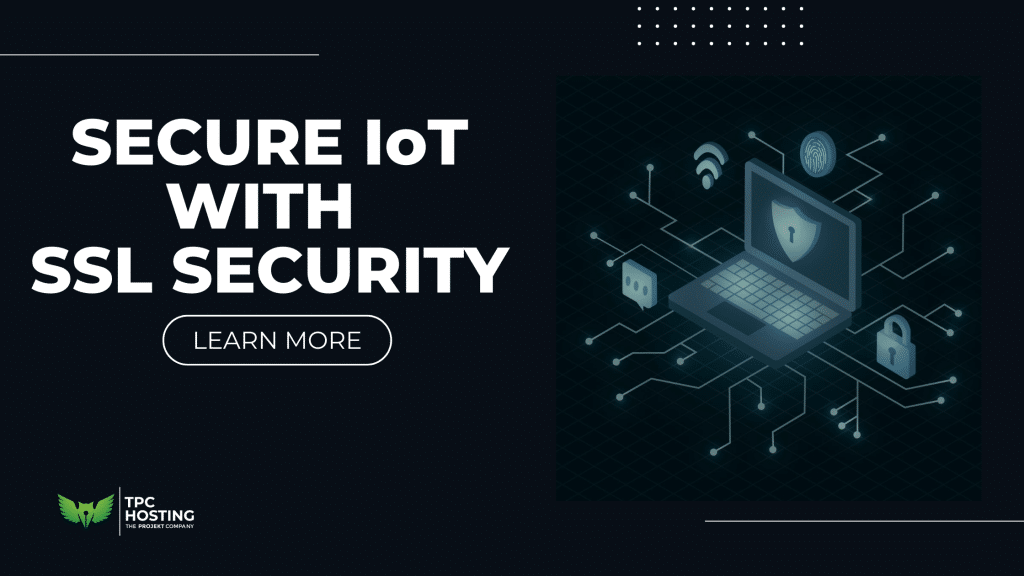
SSL for IoT and Edge Hosting
The explosive growth of the Internet of Things (IoT) and edge computing is reshaping the way digital services are delivered. From connected sensors in smart factories to intelligent edge gateways powering autonomous systems, the demand for real-time, secure communication has never been higher. While speed, scalability, and availability often dominate the conversation, security is the critical enabler that determines whether IoT and edge deployments succeed or become vulnerable entry points for cyber threats.
At the core of this security framework lies SSL/TLS encryption—the proven protocol that secures data in transit, verifies device identity, and maintains the trust of connected ecosystems. For hosting environments that serve IoT applications and edge networks, implementing SSL at scale is both a technical necessity and a competitive advantage.
Why SSL/TLS is Non-Negotiable in IoT and Edge Hosting
Unlike traditional web hosting where SSL is deployed to protect browsers and servers, IoT and edge infrastructures require continuous, low-latency encryption between distributed devices and central systems. Here’s why it’s essential:
- Device Authentication
In IoT ecosystems, rogue devices or fake gateways can intercept or alter data. SSL certificates enable mutual authentication, ensuring that both the device and the server verify each other’s identity before exchanging data. - Data Integrity
Edge-hosted applications often make time-sensitive decisions based on incoming data streams. TLS encryption prevents tampering or injection attacks, safeguarding data integrity from source to destination. - Regulatory Compliance
Industries such as healthcare, finance, and industrial automation are governed by strict data protection regulations (HIPAA, GDPR, ISO/IEC 27001). SSL implementation isn’t just good practice—it’s a compliance requirement. - Scalable Trust Models
Hosting providers managing hundreds of IoT clients can use SSL to maintain centralized trust anchors, making it easier to scale secure deployments without manually configuring each device.
Unique Challenges in SSL for IoT and Edge Hosting
IoT and edge deployments introduce complexities beyond those of standard hosting environments:
- Resource-Constrained Devices – Many IoT devices have limited CPU, memory, and battery life, making traditional SSL handshakes potentially resource-intensive.
- High Certificate Volume – Deploying thousands of certificates across devices demands an automated lifecycle management system.
- Intermittent Connectivity – Edge nodes in low-bandwidth or offline settings need SSL that reconnects securely without slowing performance.
- Diverse Device Protocols – Unlike standard web traffic (HTTPS), IoT may use MQTT, CoAP, AMQP, or proprietary protocols—each needing TLS integration.
Hosting-Centric Strategies for SSL in IoT and Edge Environments
For a hosting provider delivering IoT and edge solutions, SSL deployment needs to be strategic, automated, and performance-optimized. Below are advanced approaches:
1. Automated Certificate Provisioning at Scale
Implementing a certificate management platform integrated with the hosting environment ensures certificates are automatically issued, renewed, and revoked without manual intervention. Using ACME protocol-based automation (as in Let’s Encrypt or enterprise CAs) allows devices to request and install certificates securely.
2. Mutual TLS (mTLS) for Device-to-Server Authentication
While standard SSL protects client-server connections, mutual TLS goes further by requiring both parties to present valid certificates. This prevents unauthorized devices from accessing the hosting infrastructure and ensures only legitimate IoT nodes can send data.
3. Edge-Optimized SSL Termination
For latency-sensitive applications, SSL termination at edge servers or gateways can speed up encrypted connections while still enforcing robust encryption. Hosting providers can offload TLS processing from constrained devices to edge nodes.
4. Certificate Pinning for Device Trust
Pinning certificates within IoT firmware ensures that devices trust only specific hosting servers. This protects against man-in-the-middle attacks even if a rogue certificate is issued elsewhere.
5. Lightweight Cryptographic Protocols
Using Elliptic Curve Cryptography (ECC) over RSA for SSL keys reduces handshake times and lowers processing demands on IoT devices—critical for energy efficiency in battery-powered systems.
Integrating SSL with IoT and Edge Hosting Platforms
A forward-looking hosting provider won’t just offer SSL as a checkbox feature—they’ll integrate it natively into their IoT and edge service stack:
- Pre-Configured Secure Gateways – Edge servers deployed with pre-installed, pre-validated SSL certificates, ready for immediate device onboarding.
- API-Driven SSL Management – Allowing developers to programmatically manage SSL certificates for their connected devices via hosting platform APIs.
- Centralized Dashboard – A single pane of glass where clients can view certificate health, expiry dates, and security alerts across all devices.
Security Beyond the Certificate
While SSL is the foundation, IoT and edge hosting environments require a multi-layered security posture:
- End-to-End Encryption – Not just device-to-server, but also server-to-cloud or server-to-database traffic.
- Encrypted Firmware Updates – Using SSL-protected delivery to prevent malicious code injection.
- Real-Time Threat Monitoring – Hosting providers can offer security monitoring to detect SSL anomalies, expired certificates, or attempted breaches.
Future Outlook: SSL in a Post-Quantum IoT World
With quantum computing on the horizon, traditional cryptographic algorithms may eventually be vulnerable. Hosting providers serving IoT clients should monitor developments in post-quantum cryptography (PQC) and prepare for SSL upgrades that integrate quantum-resistant algorithms—ensuring that today’s devices remain secure tomorrow.
Conclusion
SSL is no longer just an optional security feature for web hosting—it’s the operational backbone for IoT and edge hosting environments. By leveraging advanced SSL strategies like automated provisioning, mutual authentication, and lightweight cryptography, hosting providers can deliver secure, scalable, and high-performance connectivity for the billions of devices that will define the next generation of digital infrastructure.
For IoT innovators, choosing a hosting partner that understands SSL for edge deployments isn’t just about compliance—it’s about building trust into every connection.
That’s why advanced solutions like the TPC Hosting SSL Certificate are designed to meet the unique demands of IoT and edge hosting environments, offering enterprise-grade encryption, automated management, and unmatched reliability.









